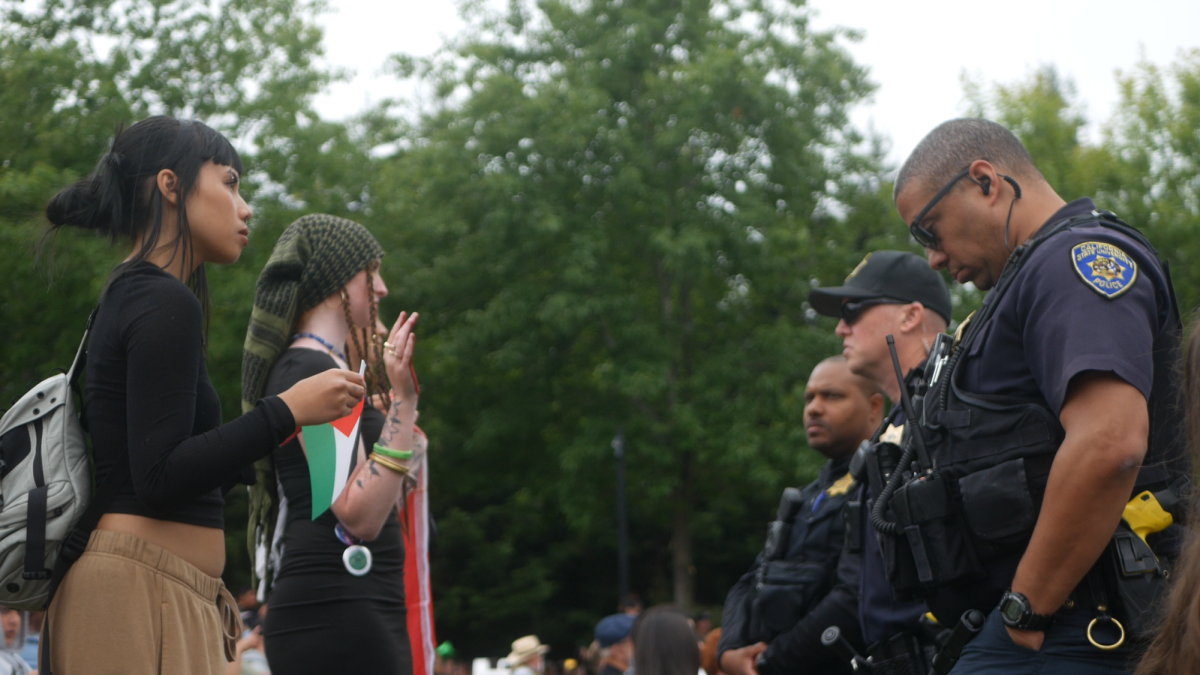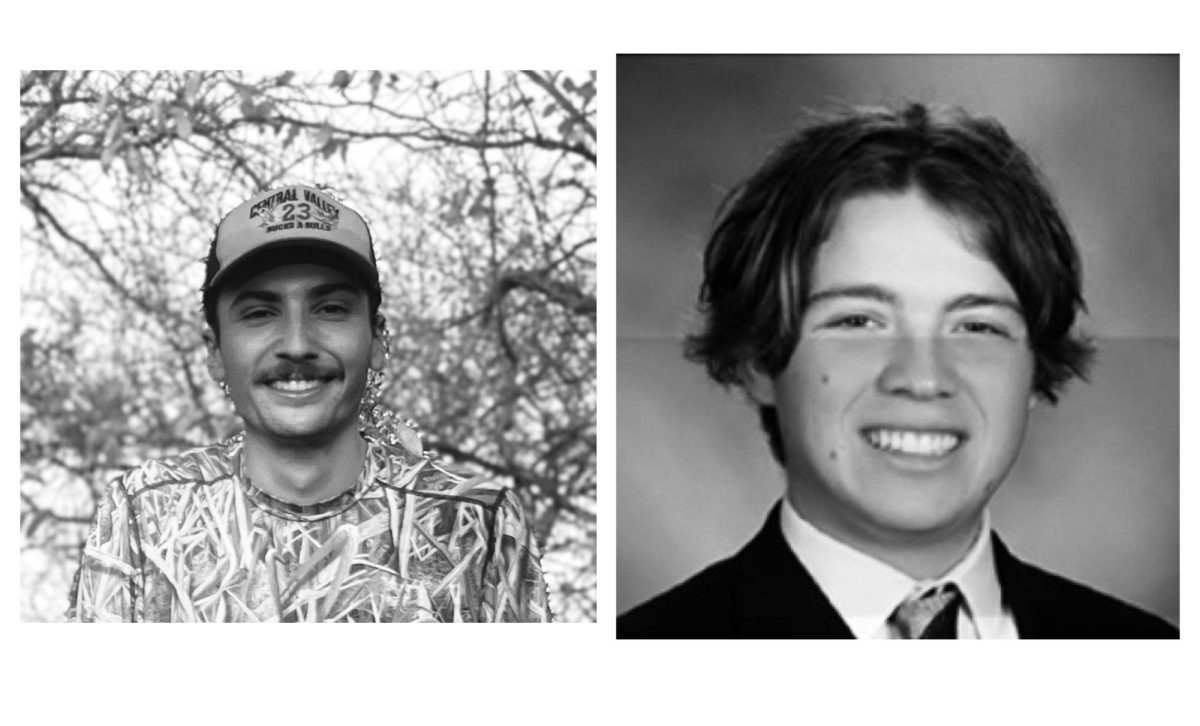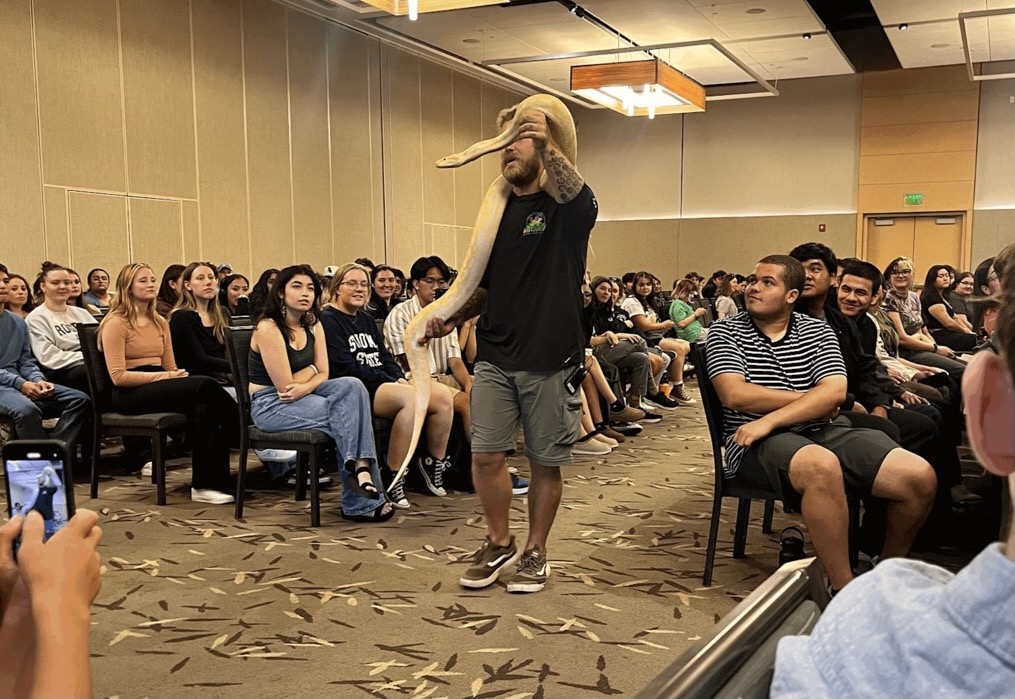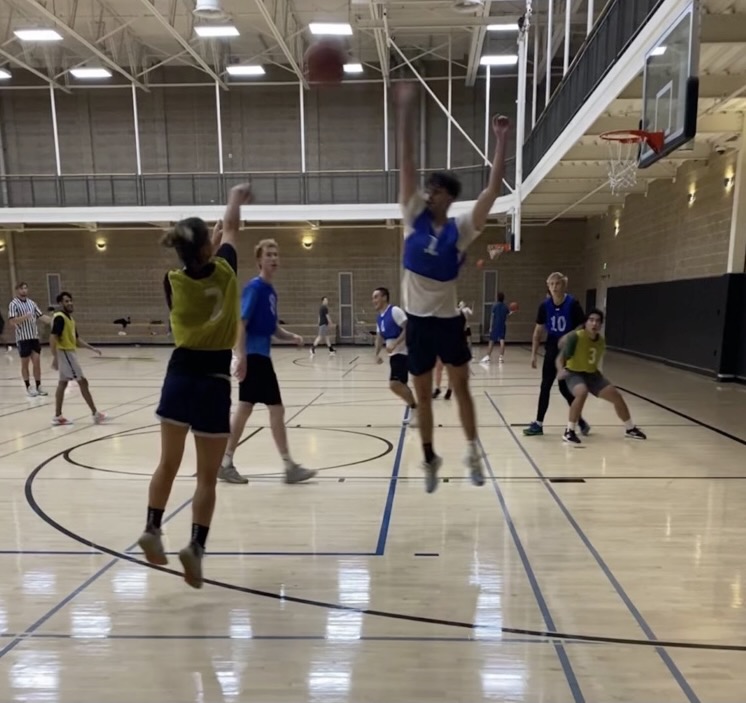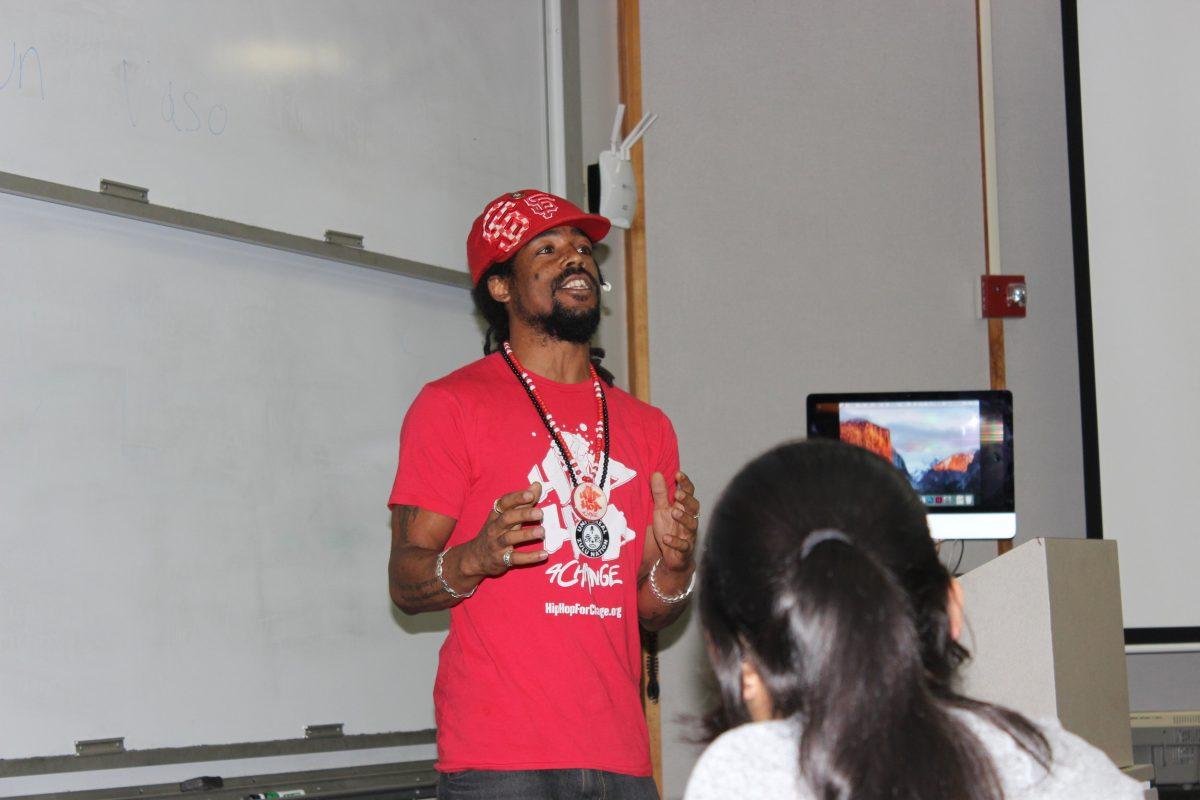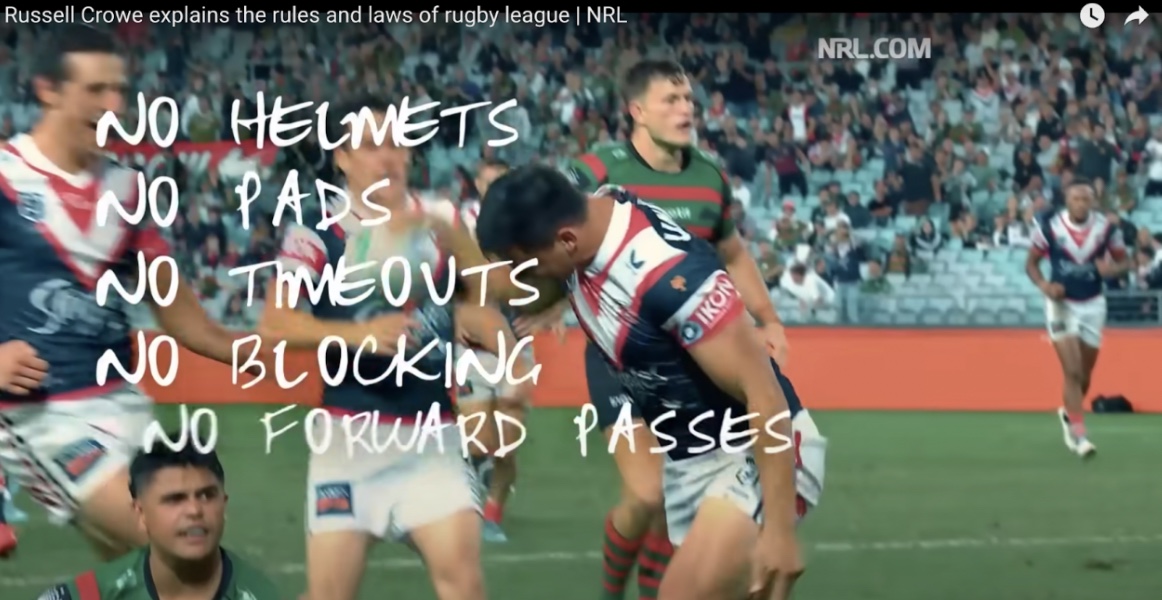Kahfre Jay’s lecture began with the student’s closing their eyes to envision a hip-hop artist of today. When asked who they pictured looked like a women, or white male, no students raised their hands.
Jay then asked if anyone pictured a brown male with gold chains and baggy clothing. Surprisingly the majority of the audience raised their hand.
Students are being taught that hip-hop is more than random rhymes and enjoyed beats, it’s a foundation for the stereotyped culture.
Last Thursday in Stevenson Hall, Jay, a local hip-hop artist, spoke before a large audience about his organization, Hip-Hop For Change.
Jay struggled growing up inSan Francisco, not too far from Sonoma State University. Throughout his childhood, racial stereotypes followed him — changing the way he viewed himself and the world around him. Jay recalled a time in his life “as very dangerous saying that children with nothing to do leads to criminal activity.”
Saving him from going down an irreversible path was the creativity of hip-hop. Forming a beat with a couple of household items on the street and adding lyrics that poured from deep within, is what captured Jay’s heart.
“Hip-hop is a culture, not glamour. It’s the way I talk. The way we speak. Its inseparable for us as a community,” Jay said.
Jay remembers the first time hearing DJ Kool Herc, who he calls the godfather of hip-hop. He recalls Herc’s invention of the extended break, saying the real sound of hip-hop was created then.
As the director of Hip-Hop For Change, Jay, more than anyone, understands the hardships children face when dealing with racial stereotypes.
Jay not only volunteers to speak at college universities, but also teaches four, hour-long hip-hop classes to kindergarten children.
Their activities include creating their own hip-hop sound, along with break down dance sessions in between.
Jay gives these children a platform for expression and passion. He says his goal is to have children begin to love themselves through these classes.
A terrifying experience during Jay’s childhood has left lasting effects.
At about the age of 14 Jay and his friend received their first paycheck from their new job.
Walking out of the bank with excitement, Jay looked confused when he saw two cop cars pull up in front of the teenagers.
Panic set in for Jay when he saw the officer immediately draw his weapon. After being pushed and straddled to the ground, Jay later found out that the whole situation was a misunderstanding.
The police were responding to a bank robbery call close to that location. Jay now has a different view of cops.
“It’s discrimination. I suffer from PTSD. My heart skips a beat when I see a cop. My hands get sweaty,” Jay said.
Listening to the racial issues Jay faced throughout his whole life, students around the room began to connect to his story. There were several hands raised when Jay asked if anyone grew up in ‘the hood’. It was hard to miss the expressions of those students faces when Jay spoke of his experience with PTSD.
“Hearing Jay speak of his experience with the cops was a point of view I had never heard before. I hadn’t really thought about hip-hop artists going through that much trouble,” said sophomore Brinkley Temple.
Jay acknowledged other hip-hop artists such as Lil Wayne and Justin Timberlake as prime examples of what is destroying hip-hop artists reputations.
Many of Jay’s companions who are also apart of the organization Hip-Hop For Change, believe Justin Timberlake shouldn’t be a hip-hop artist because he is white.
Jay’s friends are aware of the historical changes in the music industry. There has been a pattern showing white artists stealing African-American artist thunder when starting a new genre, such as disco.
According to Jay, his friends and many others want hip-hop to be solely theirs.
“This lecture was very empowering for black people. Understanding how women are stereotyped being called certain names in hip-hop songs,” freshman Symphoni Barbee said.
“Just learning how hip-hop has more to it than just music there is also police brutality and money involved with it.”






